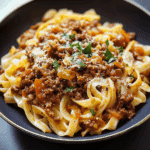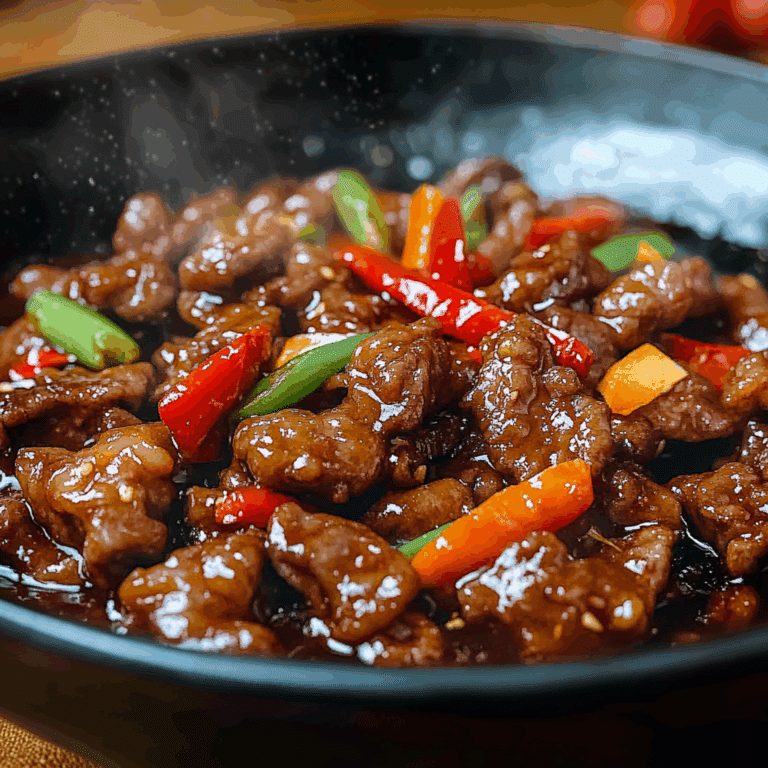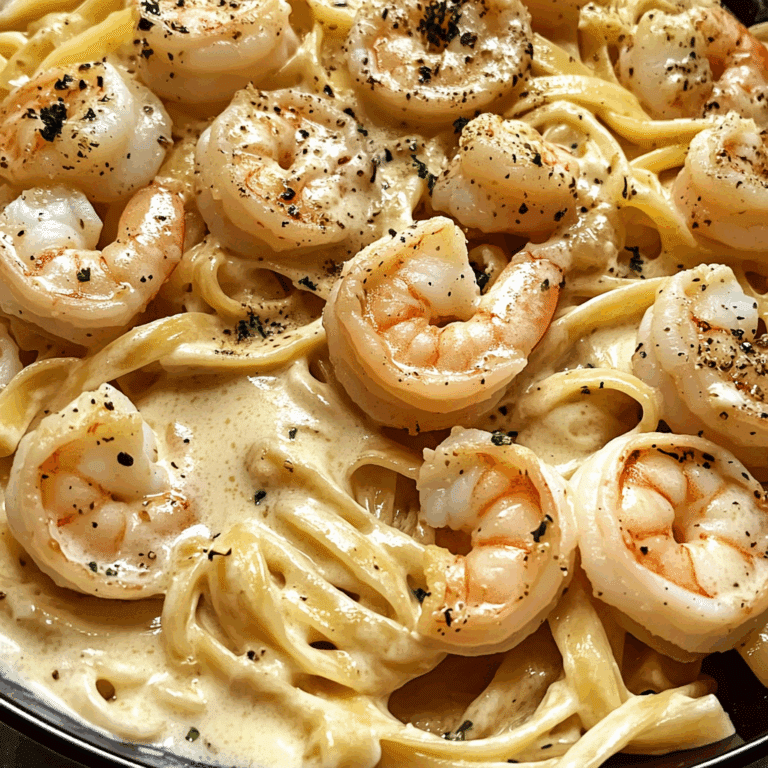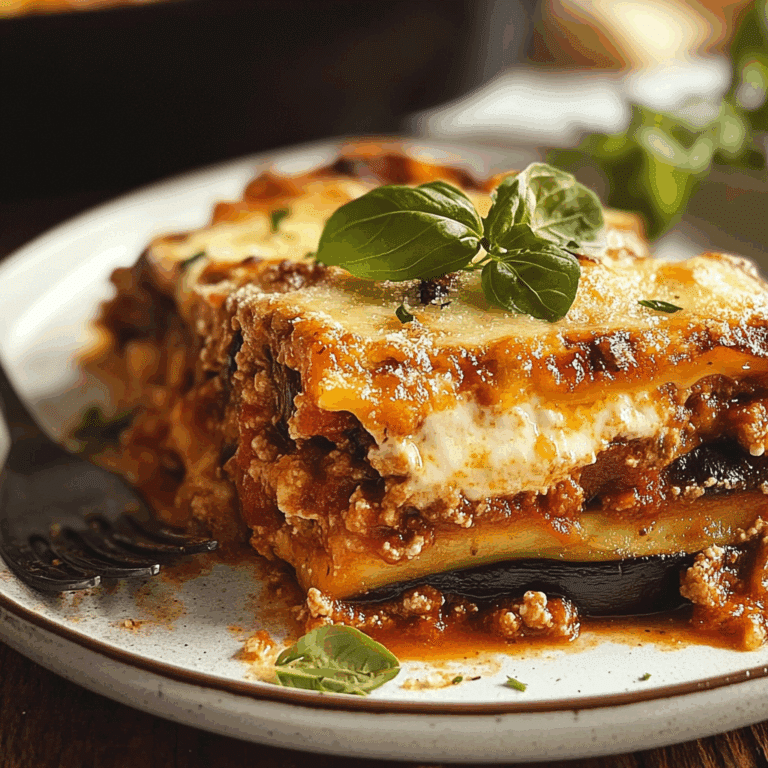How to Make Korean Bulgogi Bolognese Fast
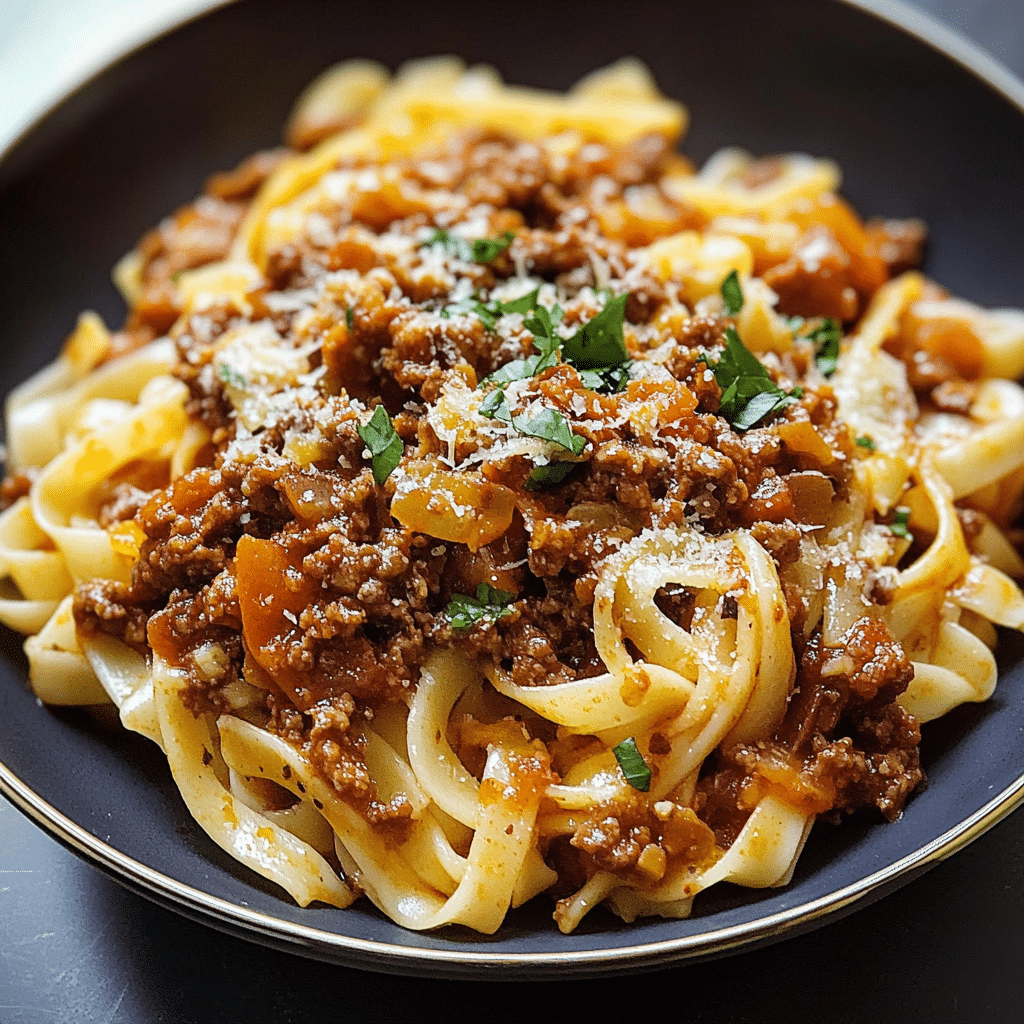
If you’re craving a dinner that’s bursting with flavor but won’t keep you in the kitchen all night, Korean Bulgogi Bolognese is your new go-to. This dish fuses the rich, savory spices of traditional Korean bulgogi with the hearty comfort of classic Italian Bolognese, creating a quick and delicious fusion meal everyone will adore. Perfect for busy weeknights or impressing friends with something unexpectedly tasty, Korean Bulgogi Bolognese brings a delightful twist to your pasta plate that’s both satisfying and packed with umami goodness.
Why You’ll Love This Recipe
- A speedy meal option: Ready in under 30 minutes, it’s perfect when time is tight but flavor matters.
- A unique flavor fusion: Blends sweet and savory Korean bulgogi flavors with traditional Italian Bolognese richness.
- Simple ingredients: Uses everyday pantry staples combined with a few Korean essentials for maximum taste.
- Family-friendly: Easy on the spice, it works well for kids and adults alike.
- Versatile and adaptable: Easily customized to suit various dietary needs or what’s available in your fridge.
Ingredients You’ll Need
This Korean Bulgogi Bolognese recipe uses a streamlined yet essential set of ingredients, each playing a key role in building layers of flavor, delivering the right texture, and offering vibrant color on your plate. Whether you’re a seasoned cook or a beginner, these ingredients make the process straightforward and rewarding.
- Ground beef or pork: The protein base that carries the rich bulgogi marinade flavors through the sauce.
- Garlic and ginger: These aromatic essentials add depth and brighten the savory notes.
- Onion: Provides sweetness and texture that make the sauce hearty and satisfying.
- Korean gochujang paste: Adds mild heat and a complex, slightly sweet chili flavor unique to Korean cuisine.
- Soy sauce: Brings the salty umami punch central to bulgogi taste.
- Brown sugar or honey: Balances out the salty and spicy elements with subtle sweetness.
- Tomato sauce or crushed tomatoes: Forms a familiar base of Bolognese, grounding the Korean flavors beautifully.
- Olive oil or sesame oil: Sesame oil especially brings that warm, nutty aroma critical for authentic flavor.
- Fresh green onions: For garnish and fresh crunch.
- Spaghetti or your favorite pasta: The perfect vehicle for soaking up that luscious sauce.
Variations for Korean Bulgogi Bolognese
One of the joys of Korean Bulgogi Bolognese is how adaptable it is. Feel free to experiment with different ingredients, swap proteins, or adjust the spice level based on your preferences or dietary requirements. Making the recipe your own is part of the fun.
- Swap proteins: Use ground turkey or chicken for a lighter version, or keep it vegetarian by substituting with crumbled tofu or mushrooms.
- Adjust spice level: Add more gochujang or a pinch of red pepper flakes for extra heat.
- Use different pasta: Try it over rice noodles or zucchini noodles to keep things gluten-free or lower in carbs.
- Add vegetables: Toss in bell peppers, mushrooms, or shredded carrots for extra color and nutrients.
- Make it cheesy: Sprinkle with parmesan or mozzarella for a fusion twist that melts perfectly into the sauce.

How to Make Korean Bulgogi Bolognese
Step 1: Prepare the Bulgogi Marinade
In a small bowl, mix together soy sauce, gochujang paste, brown sugar, minced garlic, grated ginger, and a drizzle of sesame oil. This marinade is the flavor powerhouse that will infuse your meat with that iconic bulgogi taste.
Step 2: Cook the Aromatics
Heat olive or sesame oil in a large skillet over medium heat. Add diced onions, sautéing until they become soft and translucent, then add minced garlic and ginger for an additional minute until fragrant. These aromatics build the base flavor for your sauce.
Step 3: Brown the Meat
Add your ground beef or pork to the skillet. Break it up with a spatula and cook until it’s fully browned with no pink spots, allowing the meat to soak up the bulgogi marinade as it cooks.
Step 4: Add the Sauce Components
Pour in the tomato sauce or crushed tomatoes, then stir in the pre-mixed bulgogi marinade. Let everything simmer gently on low heat for about 10-15 minutes, stirring occasionally to meld the flavors and thicken the sauce slightly.
Step 5: Cook the Pasta
While your sauce simmers, cook the spaghetti or chosen pasta according to package instructions until al dente. Drain and set aside, reserving a bit of pasta water just in case you want to loosen the sauce.
Step 6: Combine and Serve
Mix the cooked pasta into the simmering sauce, tossing it well to coat every strand. If the sauce feels too thick, add a splash of the reserved pasta water to get the perfect consistency.
Pro Tips for Making Korean Bulgogi Bolognese
- Marinate ahead: For even richer flavor, marinate the ground meat for 20 minutes before cooking.
- Low and slow simmer: Keep the sauce at a low simmer to let the flavors blend and develop complexity.
- Use fresh garlic and ginger: Fresh ingredients pack a brighter and bolder punch than powders.
- Don’t overcook the pasta: Al dente texture complements the savory sauce perfectly.
- Finish with sesame oil: A light drizzle at the end enhances the authentic Korean flavor.
How to Serve Korean Bulgogi Bolognese
Garnishes
Top your Korean Bulgogi Bolognese with thinly sliced green onions and a sprinkle of toasted sesame seeds for a burst of freshness and a nutty crunch that elevates the dish visually and taste-wise.
Side Dishes
Serve alongside steamed or stir-fried vegetables such as bok choy, spinach, or snap peas to add balance and freshness. Korean pickled radish or kimchi also pairs beautifully, offering a tangy contrast to the richness of the sauce.
Creative Ways to Present
For a fun twist, try serving Korean Bulgogi Bolognese over cauliflower rice or as a filling for lettuce wraps to enjoy the savory meat sauce with a crisp, refreshing bite and fewer carbs.
Make Ahead and Storage
Storing Leftovers
Allow the Korean Bulgogi Bolognese to cool fully before transferring it to an airtight container. Refrigerate and consume within 3 to 4 days for optimal freshness and flavor retention.
Freezing
This dish freezes beautifully. Portion it into freezer-safe containers or bags, removing as much air as possible, and freeze for up to 3 months. Thaw overnight in the fridge before reheating.
Reheating
Reheat your leftovers gently in a saucepan over low heat, stirring occasionally. Add a splash of water or broth if the sauce has thickened too much. Alternatively, microwave in short bursts, stirring in between for even heating.
FAQs
Is Korean Bulgogi Bolognese spicy?
This dish has a mild heat from the gochujang paste, but it’s easily adjustable to your taste by varying the amount used or adding chili flakes for more kick.
Can I use other meats instead of beef?
Absolutely! Ground pork, chicken, or turkey all work wonderfully and let you customize the dish to your dietary preferences.
Is this recipe gluten-free?
To keep it gluten-free, use tamari instead of soy sauce and pair with gluten-free pasta or noodles.
How long does it take to make Korean Bulgogi Bolognese?
You can have this savory, fusion-inspired dinner ready in about 30 minutes, making it practical for busy days.
What type of pasta works best?
Traditional spaghetti is excellent, but wider noodles like pappardelle or even rice noodles can add a fun texture variation.
Final Thoughts
Give Korean Bulgogi Bolognese a try the next time you want to mix things up at dinnertime. This vibrant mashup of Korean and Italian flavors is not only quick and easy but also sure to become a fast favorite in your recipe repertoire. Serve it up with your favorite sides, and enjoy a delicious dinner that feels special without the fuss.
Related Posts
- How to Make Sweet Hawaiian Teriyaki Chicken Fast
- Easy Teriyaki Pineapple Chicken & Rice Stuffed Peppers
- Crave-Worthy Cheesy Layered Mexican Lasagna Recipe
Korean Bulgogi Bolognese
Korean Bulgogi Bolognese is a quick and flavorful fusion dish combining the sweet and savory spices of Korean bulgogi with the hearty richness of classic Italian Bolognese. Ready in under 30 minutes, this family-friendly recipe uses simple, everyday ingredients accented with Korean essentials like gochujang and sesame oil. Perfect for busy weeknights or impressing guests, this versatile pasta sauce brings a unique umami-packed twist to your dinner table.
- Prep Time: 10 minutes
- Cook Time: 20 minutes
- Total Time: 30 minutes
- Yield: 4 servings 1x
- Category: Main Course
- Method: Stovetop
- Cuisine: Fusion (Korean-Italian)
- Diet: Can be gluten-free with substitutions
Ingredients
Protein
- 1 lb ground beef or pork
Aromatics
- 3 cloves garlic, minced
- 1 tablespoon grated ginger
- 1 medium onion, diced
Marinade and Sauce
- 2 tablespoons soy sauce
- 1 tablespoon Korean gochujang paste
- 1 tablespoon brown sugar or honey
- 1 cup tomato sauce or crushed tomatoes
- 1 teaspoon sesame oil (plus more for finishing)
- 1 tablespoon olive oil or additional sesame oil for sautéing
Garnish and Serving
- 2–3 fresh green onions, thinly sliced
- Spaghetti or your favorite pasta (about 8 oz)
- Optional: toasted sesame seeds for garnish
Instructions
- Prepare the Bulgogi Marinade: In a small bowl, mix together 2 tablespoons soy sauce, 1 tablespoon gochujang paste, 1 tablespoon brown sugar or honey, minced garlic, grated ginger, and a drizzle of sesame oil. This marinade is the flavor powerhouse that will infuse your meat with that iconic bulgogi taste.
- Cook the Aromatics: Heat 1 tablespoon olive oil or sesame oil in a large skillet over medium heat. Add diced onions, sautéing until soft and translucent, about 5 minutes. Then add minced garlic and grated ginger, cooking for an additional minute until fragrant. These aromatics build the base flavor for your sauce.
- Brown the Meat: Add the ground beef or pork to the skillet. Break it up with a spatula and cook until fully browned with no pink spots, allowing the meat to soak up the bulgogi marinade as it cooks, about 6-8 minutes.
- Add the Sauce Components: Pour in 1 cup tomato sauce or crushed tomatoes, then stir in the pre-mixed bulgogi marinade. Let everything simmer gently on low heat for 10-15 minutes, stirring occasionally to meld the flavors and thicken the sauce slightly.
- Cook the Pasta: While the sauce simmers, cook the spaghetti or chosen pasta according to package instructions until al dente. Drain and set aside, reserving a bit of pasta water in case you need to loosen the sauce.
- Combine and Serve: Mix the cooked pasta into the simmering sauce, tossing well to coat every strand. If the sauce feels too thick, add a splash of the reserved pasta water to reach desired consistency. Finish with a light drizzle of sesame oil and garnish with thinly sliced green onions and optional toasted sesame seeds before serving.
Notes
- Marinate the ground meat for 20 minutes before cooking for even richer flavor.
- Keep the sauce at a low simmer to develop a deep, complex taste.
- Use fresh garlic and ginger for brighter and bolder flavors.
- Cook pasta al dente to complement the savory sauce texture perfectly.
- Adjust spice level by increasing gochujang or adding red pepper flakes.
- Substitute tamari for soy sauce and gluten-free pasta to make the dish gluten-free.
- Try swapping proteins or adding vegetables like bell peppers, mushrooms, or shredded carrots for customization.
- Sprinkle parmesan or mozzarella cheese for a cheesy fusion twist.
Nutrition
- Serving Size: 1 serving (about 1/4 of recipe)
- Calories: 450
- Sugar: 8g
- Sodium: 700mg
- Fat: 20g
- Saturated Fat: 7g
- Unsaturated Fat: 10g
- Trans Fat: 0g
- Carbohydrates: 35g
- Fiber: 3g
- Protein: 30g
- Cholesterol: 80mg
Keywords: Korean Bulgogi Bolognese, fusion pasta, bulgogi sauce, Korean Italian recipe, weeknight dinner, quick pasta recipe, umami pasta, gochujang pasta sauce

